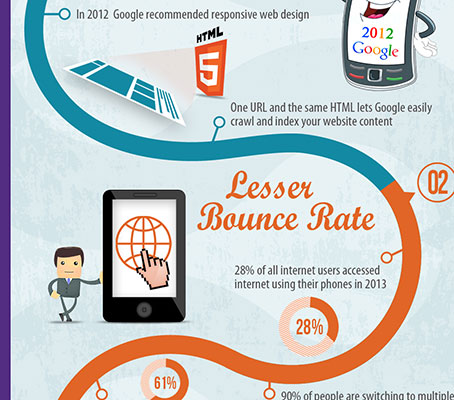Core Concepts Of Site Design: Recommendations For Crafting A User-Friendly Online Visibility
Core Concepts Of Site Design: Recommendations For Crafting A User-Friendly Online Visibility
Blog Article
Content Author-Hall Ehlers
When it involves website style, making sure user-friendliness is crucial. From responsive layout to structured navigating, every element plays a critical function in producing a website that caters to your audience's requirements. However what about the better details that can make or damage a customer's searching experience? Remain tuned as we discover some often-overlooked ideas that can boost your web site's use to the next degree, making it truly stand apart in the digital landscape.
Value of Responsive Style
Receptive layout is an important element of modern web site advancement. Ensuring your website is receptive methods that it can adjust to various display dimensions and devices, supplying a seamless experience for users.
With the boosting use of mobile phones and tablet computers to access the internet, having a receptive layout is important for reaching a bigger target market. It helps in boosting individual experience by making your web site simple to navigate and keep reading any gadget.
In addition, responsive design can positively impact your online search engine rankings, as search engines like Google focus on mobile-friendly websites. By having managed wordpress , you're additionally future-proofing your website, as new tools with differing display sizes remain to emerge.
Simplify Navigating Structure
To improve individual experience and facilitate easy access to details on your website, streamlining the navigating structure is vital. When designing your site, concentrate on creating a clear and intuitive navigating menu that aids site visitors discover what they're searching for promptly.
Limit https://www.junglescout.com/blog/amazon-a9-algorithm/ of menu products to the basics, grouping associated pages with each other to prevent frustrating customers. Usage descriptive labels that plainly show the content of each web page, making it less complicated for customers to recognize where each link will take them.
Think about applying dropdown food selections for subcategories to avoid littering the major navigating bar. Additionally, consist of just click the up coming website on the web page for individuals that like searching for details info.
Prioritize mobile responsiveness in your navigation style to make certain very easy access on all gadgets.
Maximize Web Page Tons Rate
Improving web page tons speed is crucial for retaining site visitors on your internet site. Slow-loading web pages irritate users and can bring about high bounce rates. To maximize page load rate, begin by optimizing photos. Press photos without compromising quality to decrease their data dimensions.
Furthermore, allow browser caching to keep regularly accessed sources locally, quickening lots times for returning site visitors. Minify CSS, JavaScript, and HTML files by getting rid of unnecessary personalities, remarks, and format, boosting load speed.
Consider using a web content shipment network (CDN) to disperse your web site's content throughout numerous servers worldwide, reducing latency for users accessing your site from various areas. Last but not least, restrict making use of third-party scripts and plugins, as they can dramatically impact lots times.
Conclusion
In conclusion, by including responsive layout, simplifying navigation, and maximizing page load rate, you can develop an user-friendly website that attract a wider audience and boosts user experience. These essential elements make sure that visitors can easily accessibility and navigate your website across different devices, resulting in boosted engagement and fulfillment. By focusing on these key elements, you can construct an effective web site that maintains customers coming back for more.
